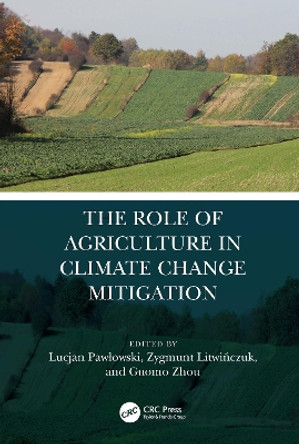Description
About the Author
Douglas V. Hoyt was a Senior Scientist at the Hughes/STX Corporation. Kenneth H. Schatten is the Program Director for Solar Terrestrial Research at the National Science Foundation.
Reviews
"Douglas Hoyt and Kenneth Schatten. . .review the effects that solar irradiance variations have in producing climate changes. The book summarizes both the history and our present understanding of this field, so as to provide a solid foundation for graduate students, current researchers and interested scientists in related fields. The book is easy to read, well written, and hard to put down. . . .The two most important problems examined by the book concern the presence of sign reversals in the observed correlations and the fact that the climate variations that are observed are larger by a factor of ten than simple energy-balance calculations can account for. The book reviews the possible explanations for these problems and is quite successful in giving the reader a well-balanced picture of the field."--Physics Today "Douglas Hoyt and Kenneth Schatten point out that the large numbers of sunspots during the 11th and 12th centuries made Earth significantly warmer, allowing Vikings to settle in Greenland, for example. The authors review many historical studies of the Sun's influence on climate. A successful blend of astronomical and climate studies with modern scientific and statistical analysis, this history of solar observations is followed by a review of how variations in solar brightness have been measured, both from the ground and space." --New Scientist "This book approaches the sun-climate connection as an ongoing journey. In three parts, the authors present material on solar activity, development of humankind's understanding of the sun, and the sun's variations; the sun-climate connection, particularly on the 11-year timescale; and possible alternative explanations for variations. Throughout the book, the authors pose the question `Does the sun affect the climate?' and present evidence to support and to discount the theory." --Bulletin of the American Meteorological Society "Hoyt and Schatten's book is a fascinating and well written history of this interesting chapter of science that is relevant to the understanding of the earth system on one hand and to the increasingly fierce battle between conservationists and industrialists concerning global warming, on the other. The well organized book takes the reader in a carefully planned and cross-referenced way from the sun to the earth, and from Theophrastus in the fourth century B.C. to solar-terrestrial physicists in the early 1990s."--Journal of Geoscience Education "A valuable resource to those engaged in global warming studies and interpreting the effect of the sun on the Earth's climate changes. . . . The book is divided into three parts. The first part . . . is an examination of solar activity throughout history to reveal the slow development of our understanding of the sun. . . . The second part . . . deals with the climate and the sun-climate connection. The final part . . . discusses possible alternative explanations for variations in the sun and climate on time scales from decades to billions of years. . . . The book has an impressive bibliography of nearly 2000 articles and papers on the sun's influence on weather and climate dating back to 1796. . . . the book could be used as a reference text for students in the civil or environmental engineering programs when they do course work in hydrology, water and wastewater management, and land-use planning."--Geo Info Systems "Douglas Hoyt and Kenneth Schatten. . .review the effects that solar irradiance variations have in producing climate changes. The book summarizes both the history and our present understanding of this field, so as to provide a solid foundation for graduate students, current researchers and interested scientists in related fields. The book is easy to read, well written, and hard to put down. . . .The two most important problems examined by the book concern the presence of sign reversals in the observed correlations and the fact that the climate variations that are observed are larger by a factor of ten than simple energy-balance calculations can account for. The book reviews the possible explanations for these problems and is quite successful in giving the reader a well-balanced picture of the field."--Physics Today "Douglas Hoyt and Kenneth Schatten point out that the large numbers of sunspots during the 11th and 12th centuries made Earth significantly warmer, allowing Vikings to settle in Greenland, for example. The authors review many historical studies of the Sun's influence on climate. A successful blend of astronomical and climate studies with modern scientific and statistical analysis, this history of solar observations is followed by a review of how variations in solar brightness have been measured, both from the ground and space." --New Scientist "This book approaches the sun-climate connection as an ongoing journey. In three parts, the authors present material on solar activity, development of humankind's understanding of the sun, and the sun's variations; the sun-climate connection, particularly on the 11-year timescale; and possible alternative explanations for variations. Throughout the book, the authors pose the question `Does the sun affect the climate?' and present evidence to support and to discount the theory." --Bulletin of the American Meteorological Society "Hoyt and Schatten's book is a fascinating and well written history of this interesting chapter of science that is relevant to the understanding of the earth system on one hand and to the increasingly fierce battle between conservationists and industrialists concerning global warming, on the other. The well organized book takes the reader in a carefully planned and cross-referenced way from the sun to the earth, and from Theophrastus in the fourth century B.C. to solar-terrestrial physicists in the early 1990s."--Journal of Geoscience Education "A valuable resource to those engaged in global warming studies and interpreting the effect of the sun on the Earth's climate changes. . . . The book is divided into three parts. The first part . . . is an examination of solar activity throughout history to reveal the slow development of our understanding of the sun. . . . The second part . . . deals with the climate and the sun-climate connection. The final part . . . discusses possible alternative explanations for variations in the sun and climate on time scales from decades to billions of years. . . . The book has an impressive bibliography of nearly 2000 articles and papers on the sun's influence on weather and climate dating back to 1796. . . . the book could be used as a reference text for students in the civil or environmental engineering programs when they do course work in hydrology, water and wastewater management, and land-use planning."--Geo Info Systems
Book Information
ISBN 9780195094145
Author Douglas V. Hoyt
Format Paperback
Page Count 288
Imprint Oxford University Press Inc
Publisher Oxford University Press Inc
Weight(grams) 420g
Dimensions(mm) 152mm * 233mm * 13mm









